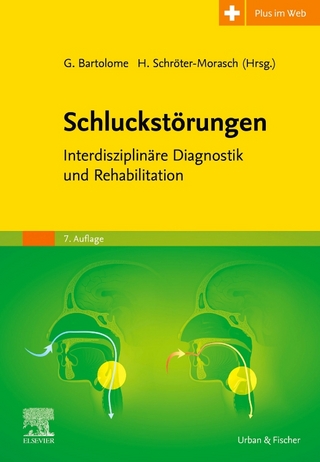
Diagnosis and Evaluation in Speech Pathology
Pearson Education Limited (Verlag)
978-1-292-04149-0 (ISBN)
Organized by communication disorder, this text makes for a vital reference, while case examples and real-world vignettes help readers best understand clinical skills with interviewing, report writing, and multicultural issues in assessment.
Preface
Chapter 1: Introduction to Diagnosis and Evaluation: Philosopihcal Issues and General Guidelines
Diagnosis and Evaluation Defined
Broadening the Notion of Assessment
Illustrating the Importance of Measurement in Current Trends
The Importance of Functional Measurements: The World Health Organization, U.S. Department of Education, and ASHA
Diagnosis to Determine the Reality of the Problem
Diagnosis to Determine the Etiology of the Problem
Diagnosis to Provide Clinical Focus
Diagnosis: Science and Art
Diagnosis Versus Eligibility
The Diagnostician as a Factor
The Client-Clinician Relationship
The Client as a Factor: Children, Adolescents, and Adults
Putting the Diagnosis to Work
Precepts Regarding the Clinical Examination
Chapter 2: Interviewing
The Importance of Interviewing
The Nature of Interviewing
Common Interviewing Considerations
An Approach to Interviewing
Using Interviewing Skills Beyond the Diagnostic Evaluation
Improving Interviewing Skills
Chapter 3: Psychometric Considerations in Dianosis and Evaluation
Common Types of Tests
Validity: The Foundation of the Test or Measure
Reliability
Some Quantitative Background for Test Interpretation
Central Tendency, Variation, and the Normal Curve
Sensitivity and Specificity: Key Concepts in Evidence-Based Practice
Criteria for Evaluatin Standardized Tests
Common Errors in the Use of Norm-Referenced Tests
Conclusion
Chapter 4: Assessment of Children with Limited Language
The Process of Becoming a Communicator: Getting the "Big Picture"
Focusing on the Child's Language Level: Nonverbal, Single-Word, and Early Multiword Communicators
Considering Etiology
Why is Early Language Assessment so Difficult?
Models to Consider in Language Assessment
Theoretical Considerations in Language Assessment
Assessment that Focuses on Early Communication and Variables that Predict Language Growth
Specific Assessment Areas: Procedures, Considerations, and Directions for Further Study
Concluding Remarks
Chapter 5: Assessment of School-Age and Adolescent Language Disorders
Use of Standardized Tests with Syntx-Level Children
Nonstandardized Testing
Language Sampling: A General Look at the Process
Later Language Development: Emerging Data
Testing Language Comprehension
Assessment of Syntax Using Analysis Packages
Assessment of Conversational Pragmatics
Issues of Memory and Processing Load
Evaluating LIteracy and School Curriculum
Conclusion
Chapter 6: Assessment of Speech Sound Disorders
Multiple Components Contributing to Sound Production
Seven Important Knowledge Areas for Evaluation of Articulation and Phonological Disorders
Overview of the Articulation/Phonology Assessment Process
Screening for Speech Sound Disorders
Traditional Assessment Procedures
Test Procedures that Evaluate Phonetic Context Effects
Assessment of Speech Sounds in Early Intervention
The Phonetic and Phonemic Inventories
Distinctive Feature Analysis
Phonological Analysis
Assessment of Phonological Knowledge
Other Testing
Integrating Data from the Assessment
Severity and Intelligibility
Computer-Assisted Analysis of Phonology
Long-Term Impact of Phonological Disorders
Chapter 7: Disorders of Fluency
Differential Diagnosis
The Appraisal of Stuttering
Evaluation at the Onset of Stuttering
Evaluation of the School-Aged Student
Assessment of the Adult Who Stutters
Chapter 8: Assessment of Aphasia
| Erscheint lt. Verlag | 1.11.2013 |
|---|---|
| Verlagsort | Harlow |
| Sprache | englisch |
| Maße | 216 x 279 mm |
| Gewicht | 937 g |
| Themenwelt | Medizin / Pharmazie ► Gesundheitsfachberufe ► Logopädie |
| ISBN-10 | 1-292-04149-8 / 1292041498 |
| ISBN-13 | 978-1-292-04149-0 / 9781292041490 |
| Zustand | Neuware |
| Haben Sie eine Frage zum Produkt? |
aus dem Bereich


